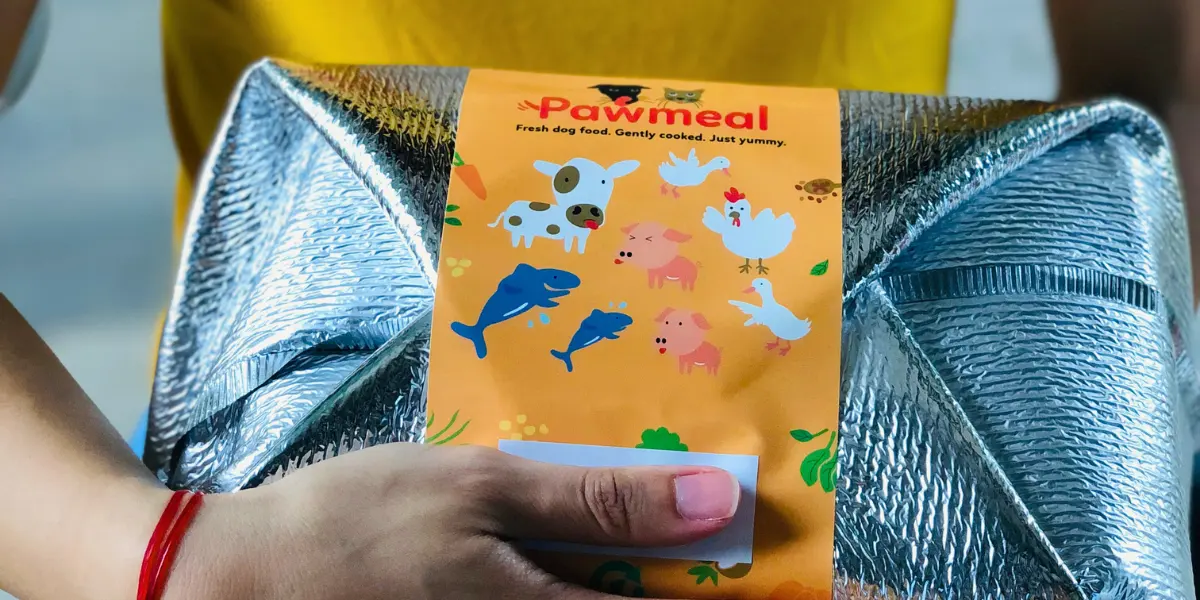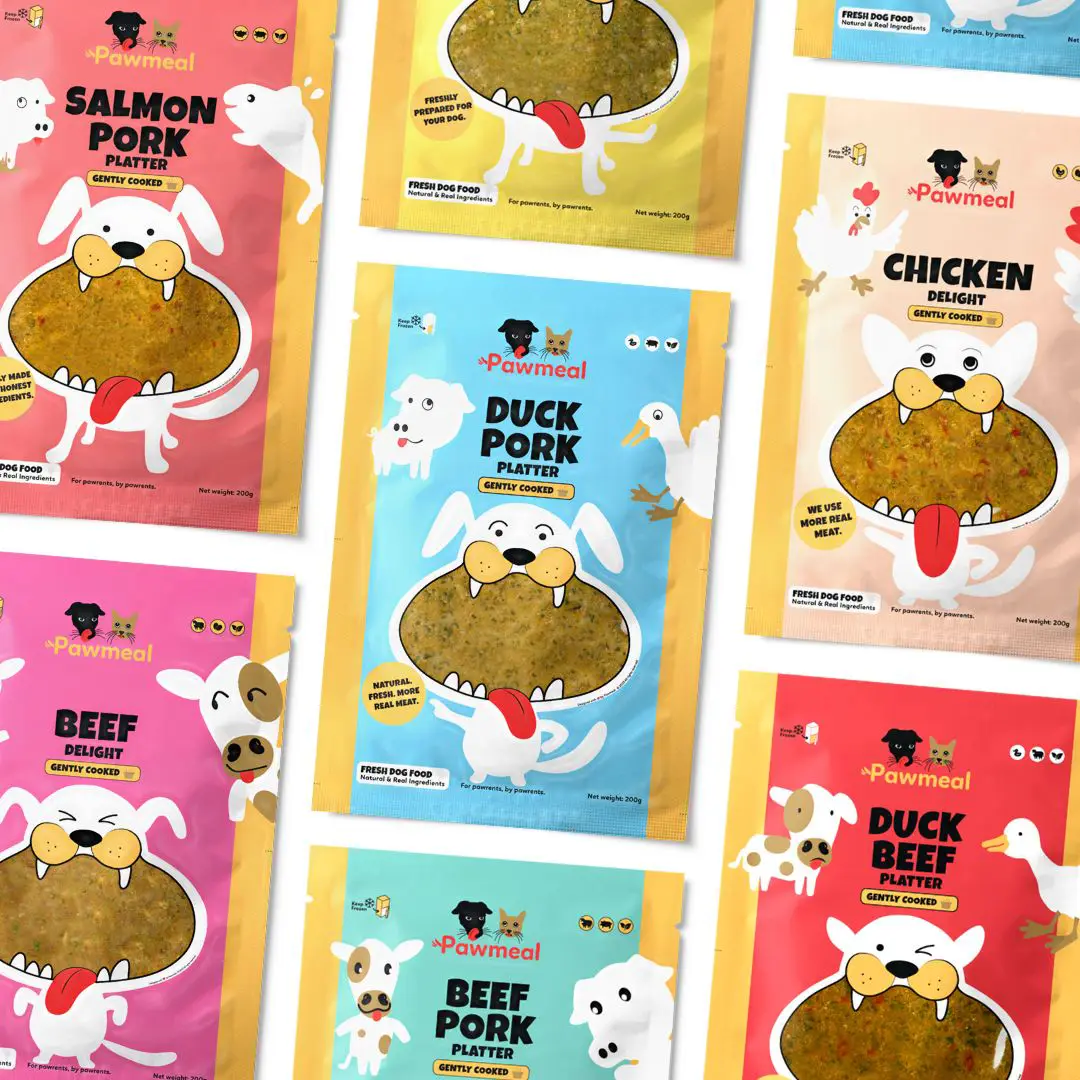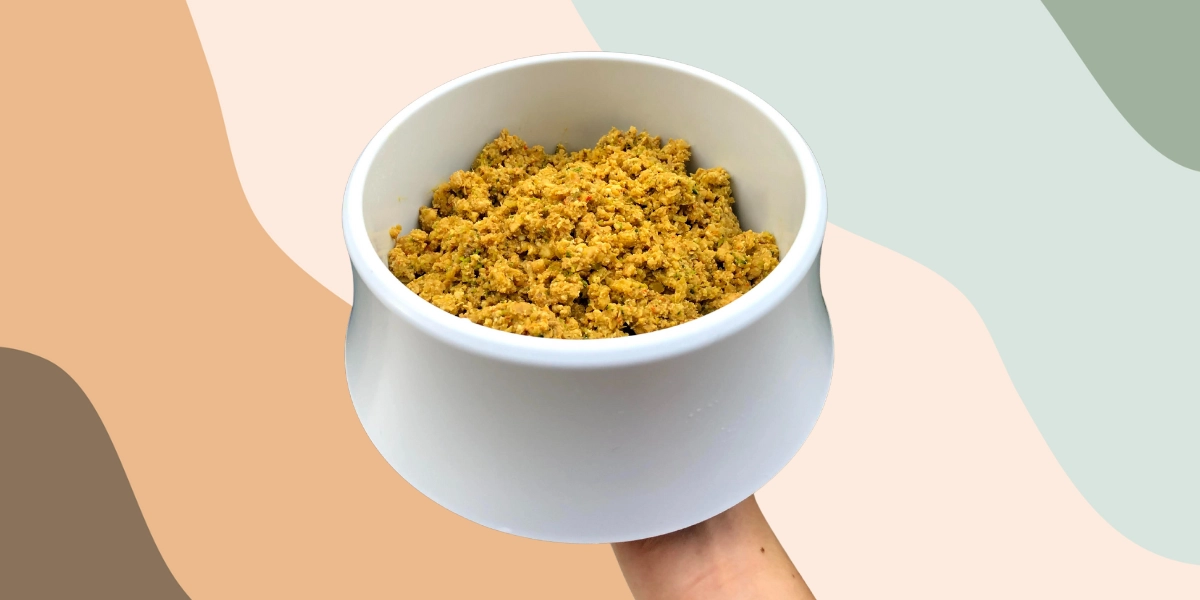A common widespread perception nowadays is that commercial pet food is seen as the default food for dogs and cats. There are many benefits associated with commercial dog food or cat food, otherwise known as kibbles. They are often advertised as convenient solutions, they are sold cheaper at large oversized packets, they are said to be able to complete your pet’s dietary needs, and the big companies have pet nutritionists working for them to formulate the dried processed food. But beneath all these, lie a lot more facts that most consumers, pet owners are unaware of. One shocking fact: commercial pet food can potentially make your pet die earlier.
Imagine..
That you are on a 100% potato chips diet over a prolonged period of time. Do you think you will be healthy eating only potato chips in the long run? ? In the case of pets, potato chips is like the equivalent of commercial dog food. This is an analogy which is very real and is happening to a lot of pets today: Pets on a commercial dog food diet are as good as living on potato chips. And this can cause all sorts of harm to their health in the long term. In this article, I will show you why commercial dog food or cat food may not be the ideal pet food for your beloved. I will also list out 4 main reasons why they are not ideal, backed by solid evidence. But first, let’s take a brief look at the history of commercial pet food.
Brief History of Commercial Pet Food
1930s
It is a wonder that during the 1930s (around 80+ years ago): “dried dog food”, “kibbles” or “canned food” for dogs were almost unheard of. Dogs (and cats) were used to eating whatever they could find in the environment and the human food given by their owners since existence and when they became companion animals. As the economy plunged into crisis in the 1930s, the companies that created factory-packed pet food began marketing pet food as a cheaper alternative to home cooked food, and employed veterinarians to endorse their products, which is a trend that continues today.
1950s to present
As processed, mass-produced food became more popular in the 1950s, commercial pet food companies began to argue that it is a much more economical way to feed processed food and still allow pets to remain healthy. These commercial dog food companies then came up with fanciful foods- Dog foods that can produce own gravy and kibbles or pellets with interesting shapes and colours. These were to make the food look ‘natural’ and also to appeal aesthetically to the pawrents. As these commercial organisations became more established, Dr. Mark Morris, DVM, who is the founder of Hill’s Pets Products and Science Diet, began to develop specialty diets with processed, dried pet food. These specialty diets are then marketed by vets and they become the main point of sales to pet owners. And this is still ongoing today. Many pet owners still think that commercial, processed pet food are the answer to proper canine nutrition. You can also find out a bit more about the short history of commercial pet food companies in Olewo’s blog.
What Commercial Pet Food Companies Don’t Want You to Know
There are some things which commercial pet food manufacturers do not want you to know, because it will affect the perception of the quality of their products. The first thing is how they cook and process the raw ingredients. Most brands use a cooking method called extrusion, which is a way to create dried food from boiling big containers of meat, fat and grain scraps. The pet food manufacturers purchase raw materials and blend the rendered fat and meat with starch fillers. After that, they add bulk artificial vitamin and mineral supplements and cook the mix at high temperatures. What is conflicting is that as natural vitamins and minerals are lost due to very high heat, artificial ones are added back in to ‘balance’ the food. Another thing that these companies kept quiet about is that they still use mainly grains, grain fillers, starches, fibres and meat by-products in their recipes. Despite advertising meat as the main ingredient, they also add a lot of other ‘unnecessary’ ingredients. And they have a way to write the ingredient labels such that this goes under the radar. All these efforts, just to save costs and boost profitability.
4 Reasons Why Commercial Dog Food Does Little Good to Your Pet
1. Quality of ingredients used is questionable
First, amongst pet nutrition enthusiasts, there is a description that commercial food most often contains the “4-D” meat. These are: Dead animals’ meat, Dying animals’s meat, Diseased animals’ meat, and Disabled animals’ meat. Raw meat from the above are much cheaper to get, and commercial pet companies use “4-D” meat to minimise their costs. Even if the food label’s ingredient list looks impressive, it does not inform about their origins. So next time you are at a pet shop, look beyond the food labels and fanciful descriptions on the food packages. Talk to fellow pet owners, ask the pet shop questions, leave your comments below, or even email us (he***@pa*****.com ?). We are more than happy to share our insights on the particular brand that you are considering. Another issue with ingredient quality is that a lot of these manufacturers use “feed-grade” ingredients to make food. Some of these examples are feed corn and crushed remnants of animals and their bones. These cheap ingredients are used as fillers so that the food makers do not need to use as much meat.
2. Lack of quality proteins, fats, natural vitamins and minerals
Second, because of the method of processing food and usage of lower quality ingredients, most commercial pet food are not ‘balanced’ to begin with. They have to depend on artificial nutrients and minerals to make their pet food ‘balanced’ and ‘complete’. This is usually sufficient to meet The Association of American Feed Control Officials (AAFCO)’s nutritional standards.
About AAFCO:
AAFCO allows pet food manufacturers to declare their food as ‘nutritionally complete’ if minimum one of the following requirements meets the minimum criteria:
– The food meets the nutrient requirements of the nutrient profile.
– The food is similar to another product that does meet nutrient requirements.
Actually, AAFCO is a private corporation. This means that the local government does not regulate them! And they are quite different from the National Research Council (NRC), which publishes a separate animal nutrient requirement guidelines. This hints at why AAFCO’s nutrient requirements are so low for commercial pet food companies. You can read more about AAFCO here.
Additionally, in Dana Scott’s post, she gave the following example of a food label with synthetic vitamins vs a food label without synthetic vitamins. Do you know how to spot synthetic vitamins in your pet’s dry food?


Which kibble company uses natural ingredients?
And across an industry-wide study of the existing pet food in the market, only less than 1% of today’s commercial dried dog food or kibbles do not use synthetic ingredients. According to Dana, only the following list of 3 commercial pet food makers use zero synthetics (It’s real. You can read it here):
– Carna4
– Nature’s Logic
– Acana (Grasslands Variety)
Yes, that’s all! The rest of the pet food brand all use synthetic vitamins in their food. Which means that your dog who has been eating commercial pet food probably have been eating artificial ingredients. Even the commonly known best commercial dog food brands are not pure natural!
3. Extreme high heat processing and artificial preservatives to prolong shelf life
Third. Like it or not, dry pet food makers use high heat processing and artificial preservatives to make most kibbles. Extrusion uses extreme high heat and makes it possible to mass produce dried dog food. Extrusion allows the possibility to make kibbles into all kinds of fanciful shapes and sizes. High heat removes most of the moisture and dry the food to maximise shelf life. However, this high temperature destroys most of the natural nutrients and vitamins, which diminishes commercial pet food’s overall nutrient value. Therefore, these manufacturers resort to using artificial preservatives to make good on the kibbles.
Artificial preservatives are excellent for commercial pet food manufacturers because they are less expensive. They also preserve food longer and more reliably than natural preservatives. This is why lots of pet food manufacturers use them. However, there has been a shift in consumers’ preference towards natural pet products. This means that manufacturers have to find ways to avoid showing artificial preservatives on food labels. For example, chicken meals and lamb meals usually contain around 10-14% fat which needs to be preserved. These preservatives are usually deemed to be in low quantities and are considered as “incidental additives”. This means that pet food companies do not need to show these preservatives on the product labels.
4. Dogs who are on a commercial dog food diet tend to experience degenerative health and die prematurely
Fourth. According to Lew Olson, author of Raw and Natural Nutrition for Dogs, the leading diseases in dogs today like cancer, heart and kidney diseases are almost unheard of before the rise of commercial pet food. Little coincidence that when so many pets with diseases and allergies today are on a commercial pet food diet. The chemicals and preservatives used in commercial pet foods prove to be a main factor to cause cancer in pets. A research by Purdue University also proves that adding human food to your dog’s pet food diet helps reduce cancer risks by up to 90%! You can check out the research paper here (the evidence) and the awesome video by Rodney Habib here.
So Why Are Most Pet Owners Still Feeding Commercial Pet Food?
If you are still reading, you may already be wondering why most people are still feeding commercial dog food. We observed that there are 4 main insights which we got from speaking with many fellow dog lovers and pawrents:
Convenience
This is one of the most common reasons that most pet pawrents give. Most of them are working adults, which means that they do not have time to cook for their furkids. As a result, most turn to dried dog food or what they perceive to be the ‘best commercial dog food’ for their pets.
“My pet is still alive and healthy, after feeding her commercial pet food diet all these years”
A group of pawrents whom we spoke to feel that a commercial pet food diet is good for their pets. They showed us their dogs as living examples, proclaiming that their dogs are already around 10 years old. Another group said that they all along have the idea that commercial pet food companies make nutritious food. When we probed further, they explained that the reason is because these commercial pet companies are marketing their products as ‘balanced’ pet food.
Our pets’ health and vitality do not show negative effects immediately from a commercial pet food diet. In most cases, degenerative health only surfaces towards the latter stages of your pet’s life. This is when all kinds of diseases appear, which sadly, ultimately leads to premature death. Just because your pet is alive by being on a commercial pet food diet does not mean it is thriving.
“Some pet care professionals are saying it is adequate”
Some pet care professionals actually advocate eating kibbles. Nutrition is actually not part of a usual vet’s scope of specialisation. Pet food nutritionists are a rare species in the world, and very few can claim to be a pet nutrition ‘expert’. And do you know why posters of commercial pet food brands appear at most vet clinics’ walls? Actually, these commercial pet food companies very often enter into collaboration agreements with vet clinics. In exchange, vet clinics will sell specialty diets and commercial dog food to their patients and customers. As time goes by, pet pawrents slowly will have the idea that these commercial pet food companies are ‘good’ for their pets, as even professionals are endorsing for them.
“My friends said commercial pet food is good”
Our friends and closed ones sometimes influence us and affect our choices and decisions. When we read or hear reviews from our friends, we tend to believe in the product more. If we spread the misconception, more people will have wrong understandings. Because of this, a commercial pet food that is actually not-so-nutritious can turn out and become the ‘best food’.
Conclusion
It is evident that commercial pet food has both pros and cons. However, we cannot ignore the potential implications of feeding commercial food. It is probably not coincidental that cancer and other terminal diseases began to spike during an era when kibbles become popular. If your dog or cat is on a long-term commercial pet food diet, it will be at a risk of experiencing degenerative health issues later on in its life. This is already proven. However, commercially processed pet food is also here to stay, as lots of consumers still deem them to be convenient and a default food option.
On an encouraging note, there is a growing group of pet owners who begin to see fresh food as a serious alternative for their pets. These alternative food include fresh home cooked food, raw food, freezed dried fresh food, and dehydrated fresh food.
So will we see a rising fresh food feeding culture? Only time will tell.
Explore our fresh food options, or customise a calories specific fresh food diet here.
Find out more about our journey to increase awareness in giving good nutrition for pets ❤.










